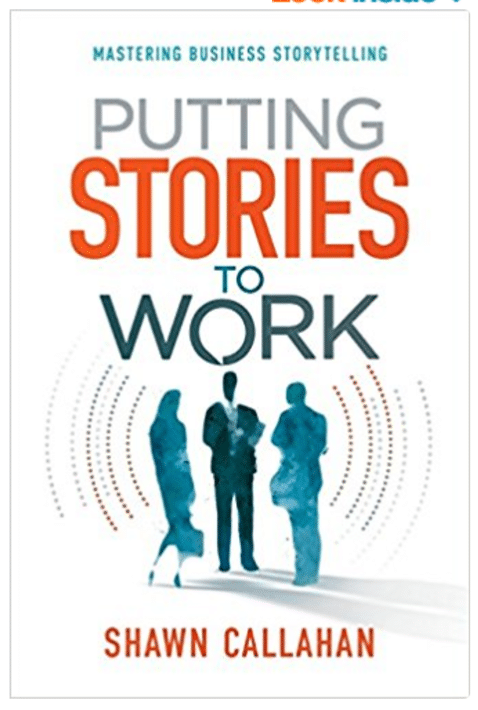All great business strategy narratives are an answer to some adversity
Steve Jobs bounces onto the stage and grabs the slide changer from a colleague with a friendly, ‘Thanks Scott.”
He’s looking thin and pale. Illness has taken its toll, but his energy remains boundless. It’s the 2011 Apple Worldwide Developers Conference, and Steve is about to announce a change in strategy for his company. The 1000+ crowd cheers as he steps into the spotlight and then falls silent, hanging on his next utterance.
“About 10 years ago we had one of our most important insights, and that was the PC was going to become the digital hub for your digital life.” With these words, Steve Jobs begins his strategy story.
https://www.youtube.com/watch?v=zHZf9wr2Ak8
A global study conducted in 2012 involving 300,000 employees found that just over half did not really understand the basics of their organizations’ strategies.
It’s the dirty little secret of so many businesses: ask any employee, including the executive team, about the company strategy and they’ll lunge for a document that reminds them what it is. It’s rarely embedded in their minds and, as a result, the espoused strategy has a harder time influencing day-to-day decision-making.
Given the effort applied to strategy development, there is a massive disconnect here. The opportunity to reconnect a firm with its strategy lies in how the strategy is communicated and understood.
How most brands communicate strategy
There are a number of ways of conveying your organization’s strategy. One popular approach is to craft a beautiful-looking PowerPoint presentation and email it to all of your team leaders, with the instruction to present it to their teams.
The head of strategy for one of Australia’s most iconic brands told me he happened to sit in on a strategy talk when a team leader presented a slide deck. It went something like this:
“OK, HQ has asked me to tell you about… [clicks to first slide] ah yes, our strategy… [clicks to the next slide and reads out the contents, then clicks again and pauses] not sure what this means… [clicks to the next slide]”.
The audience slid into boredom. The talk failed to engage the team and left them none the wiser about the strategy. In fact, the employees were probably more cynical about and disengaged from the company than they had been before they sat down for the presentation.
So sure, emailing a slide deck is easy, but in most cases, it’s next to useless. It often achieves the opposite of what you want.
Another popular method is the CEO roadshow. This is where the CEO visits each company site and presents the slide deck themselves.
This act is symbolic. It’s intended to show that the CEO really cares about the strategy, and they want everyone to know about it because it’s so important.
The audience usually watches intently, but mainly to gauge whether the CEO really does believe in what they’re spouting. Of course, the CEO is also there to answer questions, but no-one dares ask one in such an open forum. Sadly, the result is often similar to what was observed by the head of strategy mentioned above.
In kicking off a division meeting following one CEO roadshow, a department head at a well-known bank asked the roomful of people: “So, who can tell me about our strategy?” No response. “OK, just one of the 12 items then.” Still nothing. “So, no-one can remember any of the 12 things we’ve just been talking about?” Silence.
Why isn’t the current way of communicating working?
Presentations driven by slide decks typically contain lots of facts in the form of bullet points and graphs, but because these are not supplied within an overarching narrative, it’s hard for the audience to join the dots.
People forget the information almost as soon as they file out of the auditorium because the presentation lacks a memorable story.
A key question people often ask when they hear about a new strategy is “Why? Why are we outsourcing? Why are we demoting the Mac to the level of an iPhone or iPad?” They want a plausible explanation. And in the absence of one, they’ll make one up, especially when they are stressed.
A story effectively answers the “why” questions because it sets out what has prompted the new strategy and what’s going to happen next.
A story provides the context for a strategy, making it meaningful and allowing it to connect with other company stories employees may have in their minds.
How to develop a better strategy story
I was explaining the concept of a strategy story during a training session for a Malaysian telecommunications company.
Suddenly, the organization’s leader jumped up and said, “I get it. Here’s our story. Over the last 10 years, we’ve been focused on building mobile coverage. Our revenues have steadily increased but our infrastructure costs have risen faster. In two years, our infrastructure costs will exceed revenue. That’s why we’re now moving to collaborate and share infrastructure with our competitors, and putting our energy into computing using what runs on our mobile network.”
Why was the company collaborating with its competitors on infrastructure? Because its infrastructure costs were going through the roof. A simple yet effective story made this clear.
Strategy stories are powerful because people can picture the events, remember them and retell them. A well-developed strategy story not only answers the “Why?” questions but also conveys emotion in a way that inspires people to take action in accordance with the new strategy.
Creating an effective strategy story, one with real impact, involves much more than simply crafting and then telling a compelling story.
It involves leaders developing the strategy story themselves so that they can own it. It involves teams being comfortable with telling the story and weaving their own experiences through it.
And most importantly, it involves everyone in the organization telling their own versions of the strategy story so that they all own it and act to support and build on it.
Challenges in telling your strategy story
Photo by rawpixel on Unsplash
Let’s now take a closer look at some of the specific challenges involved in creating and telling a strategy story.
Developing an effective strategy story requires some work, primarily by the members of the executive team who will often have a variety of views about what the company strategy actually is. It’s crucial that the responsibility for the story is not outsourced to the strategy department or, even worse, to a creative agency.
The leaders of the company must first clarify their own understanding of the strategy.
They must then own both the strategy and the story that communicates it.
Finally, they must not merely be comfortable telling that story but must relish doing so.
One of the challenges faced by leaders during this process is to overcome the desire to get the words of the story absolutely perfect, as if the next Pulitzer Prize-winning article is being written. Rather, the story should be written to suit oral retellings, where the spine of the story will remain unchanged but the exact wording will be chosen by the speaker. Stories have a tremendous capacity for adaptation.
Another challenge faced by leaders is the desire to only talk about what’s working well. The problem with this, however, is that a Pollyanna story—where everything is good; nothing goes wrong—is hardly ever believed for long, if at all. Eventually, people will see it merely as corporate spin.
Include failure in your stories
One of the simplest ways of working out what failings to include in your strategy story is to explore the possible anti-tales that might be told to discredit it.
A key lesson in story work is that you can’t beat a good story with fact; you can only beat it with a better story.
Once those in the executive team can tell the strategy story, complete with personal anecdotes that really bring the story to life, they need to get the rest of the organization involved in telling it. It’s important to allow for variations of the story to emerge that suit different parts of the business, but which maintain the story’s core.
A large event provides the perfect forum for leaders to present the story and for participants to share their own anecdotes, which can reinforce and illustrate the strategy and how it’s being enacted in the business. Immersing many people in a story at the same time results in the aspect of group psychology called social proof.
Crucially, leaders should also align their decisions and behaviors with the company strategy and the strategy story that describes it, or they will see their strategic efforts fail. Strategy implementation is change management.
This is an edited excerpt from the award-winning Putting Stories to Work: Mastering Business Storytelling by Shawn Callahan. Available on Amazon, Audible and other good bookstores.
Listen to Shawn Callahan on episode Your Limitless Storytelling Potential









